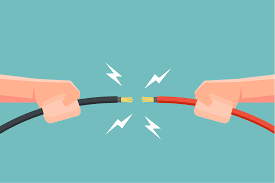Older adults can save tens of thousands of dollars annually by choosing assisted living communities over aging in place in their homes.
Unlike point solutions, Inspiren unifies resident safety, care planning, staffing, and emergency response into a single AI-powered platform.
An artificial intelligence-powered virtual assistant platform for senior living and care providers.
Betting that AI could lighten the clinician load.

 What does it mean when offerings and consumers aren’t aligned? For older consumers and their families, the technology market and senior housing industry are two cases in point. Consider
What does it mean when offerings and consumers aren’t aligned? For older consumers and their families, the technology market and senior housing industry are two cases in point. Consider  Not adopting tech -- it's not okay. Lacking access to smartphones, Internet, in-home broadband/WiFi cuts oldest out of access to modern telehealth, communication and engagement, in-home sensors, outside-home GPS, fall detection, and device integration with smartphones. The issue of non-adoption, particularly as more health services move online, will become increasingly vexing for service providers of all types. Surveying of the oldest has fallen out of favor, though L
Not adopting tech -- it's not okay. Lacking access to smartphones, Internet, in-home broadband/WiFi cuts oldest out of access to modern telehealth, communication and engagement, in-home sensors, outside-home GPS, fall detection, and device integration with smartphones. The issue of non-adoption, particularly as more health services move online, will become increasingly vexing for service providers of all types. Surveying of the oldest has fallen out of favor, though L Today’s What’s Next Boomer Business Summit is recognized as key for entrepreneurs. For the past 16 years, Mary Furlong and Associates have presented the
Today’s What’s Next Boomer Business Summit is recognized as key for entrepreneurs. For the past 16 years, Mary Furlong and Associates have presented the  You may have seen that rechargeable hearing aid commercial. What was most striking about the
You may have seen that rechargeable hearing aid commercial. What was most striking about the